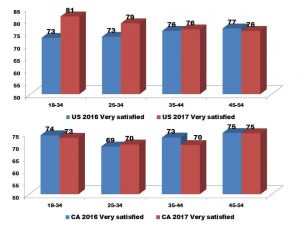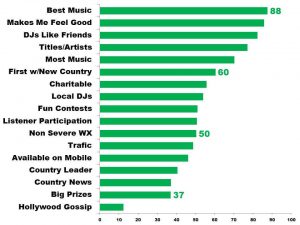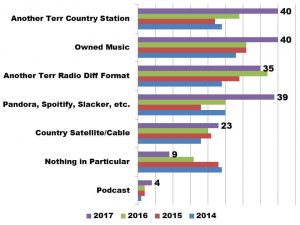Baseball likes the number 9: 9 players in the batting order, 9 innings, 9 fielding positions, great players who wore the number 9 like Ted Williams, Roger Marris and Carlos Guillen.
So in honor of Opening Day 2017, here are 9 ways baseball can inspire you to do your best radio.
And, be warned, we just might go into extra innings.
1. Baseball is played one pitch at a time.
The standings, the win loss record, even the box score are only summations of a game’s pitch by pitch activity.
A pitcher discussing his performance is likely to zero in on a few pitches that made a difference in a game.
Likewise, the impression of a show is earned one break at a time. Think of each break as a pitch that could have a game changing impact.
2. Staying stationary invites others to pass you.
A core principle behind the “Moneyball” strategy is that new thinking can give you a competitive advantage. In the case of Billy Beane and the Oakland A’s it was the suggestion to use was non-traditional metrics to determine the value of a player – perhaps most famously at the time (late 90’s to early 2000’s) a player’s on-base percentage was undervalued while slugging was over-valued.
Stations too can have assets that could be leveraged for greater benefit: someone with raw talent that can be groomed for greatness, someone with untapped creative skills that perhaps is in another department, even non-radio people in the market who could make a positive contribution.
Similarly consider those metrics you already have access too; time spent with those (ratings, research, logs, your music system, etc.) can open new doors of opportunity.
We have so many demands on us that creative thinking and potentially great ideas that have yet to be explored can be casualties of time, resulting in a ‘status quo’ approach that can allow others to capture a competitive advantage that could have been yours.
3. “You don’t save a pitcher for tomorrow. Tomorrow it may rain.” Leo Durocher
In her piece, “Don’t Save the Best for Last,” Psychology Today writer Amy Cooper Rodriguez shares the story of her grandfather who would always squirrel away things until they fall apart instead of using them when they were most valuable. Vegetables that have gone bad would be eaten before the fresh vegetables - which in turn would go bad before finally being eaten.
What’s holding you back from launching your latest great idea, a great coaching tip someone gave you, or working on an area of your performance that you know you want to improve? Fear of failure? Lack of confidence? Simply not giving it a high enough priority? Meaning to get started but never quite getting around to it?
Tony Robbins: “…the greatest gift that extraordinarily successful people have over the average person is their ability to get themselves to take action."
4. Relatedly, the home run is not the only measure of hitting success
Great baseball thinker Paul Johnson puts the value of a home run at three times that of a single. However the ability to home runs is still no guarantee of winning. In fact, a double, a single and a walk have a greater combined value than a homer.
The 2016 Baltimore Orioles had the highest ratio of home runs to at bats - about 1:22. Meanwhile the 2016 World Series Champions the Chicago Cubs were 13th.
The point is, knock your content out of the park when you can, but remember that being able to get on base consistently wins games too.
5. Scouting is Important
Injuries, lapses in performance, schedule changes, are all part of baseball making a team’s farm system an important component of remaining competitive. Staff changes happen for any number of reasons.
Having good people on your radar is smart not because doing so makes it easier to fill vacancies, but rather because it's a strategy that can help maintain or improve your lineup.
No ball team would figure they could replace their all-stars with sub- par players they had to ‘settle for’ and continue to perform at the same level.
A radio station can’t think that way either.
6. “If you don't know where you're going you're gonna wind up some place else.” Yogi Berra
Successful stations (and people for that matter) need a plan - probably lots of them. In radio the list includes ratings and sales plans to get to reach goals, plans for differentiation, a plan for social media, a plan to help your talent improve, and a backup plan or two for should original plans go sideways.
7. “The manager’s job is to do everything it takes to set his or her team up to win.” Earl Weaver
Know each individual on your team: their skills, motivations, values and vulnerabilities.
Make everyone feel important and valued.
Recognize those with the greatest potential and spend sufficient quality coaching time with them.
Have a well-thought out strategy that takes advantage of your assets.
Solicit input from others.
Writing in Forbes, Glenn Llopis put it this way: “…managers must quickly earn trust from their colleagues to inspire team unity and collaboration that is centered on the fundamental principles of loyalty, communication and transparency. The best managers get it: no explanation required. They are proactive in addressing the needs of their team. They go out of their way to be creative and find new ways to uniquely motivate each member of the team.
They are always aware of moods, mindset, attitude, and engagement levels. The best managers are the ones who “take one for the team” and can quickly turn around times of duress into rewarding opportunities.
8. Embrace the Bobble Head!
While it varies across ball clubs, playing better generally improves attendance. Still, an effective promotion can goose a single night’s attendance. Bobble Head Night for example has spiked attendance 5000 to 20000. Smaller promotions have helped generate additional if smaller ticket sale increases.
Bobble Heads are prized by fans as limits edition, one of a kind collectible. Fox Sports reports that some are even passed down as family heirlooms.
The key to any successful baseball promotion is the same as it is for radio: know what listeners will respond to and why.
Radio is in a unique position to create once in a lifetime experiences for listeners. Embrace it.
9. Respect the fans
Fans love their team and expect (rightly so) to have the team reciprocate. Such reciprocity starts with a goal of fielding the best team possible and extends to creating a culture where everyone on the team is prepared to contribute and to play "all out" every day on every play – which is a basic fan expectation.
It also means creating a great environment to watch the game in person, the ability to access the game anywhere on any device, to have more than an impersonal relationship with the team.
Country fans have similar expectations. Whether it’s the result of the bond artists have formed with country fans or the personal nature of the music or the efforts of country stations to connect fans to artists, there’s a connectivity expectation.
It’s magic.
Have a mindset of “loving on the fans” and making them feel special
Extra Innings:
10. “If you’ve got a great fastball, throw it.” Mike O’Malley, Consultant/Partner A&O&B
Translation: find out what you’re best at, and do that as often as you can.
I'm always disappointed when I ask an air talent (often new to the business), what it is they do best on the air and get a blank look as an answer. How will you grow your assets if you don't know what they
are?
Sure, you’ll need some additional, solid material to round out your performance, you’ll be remembered by what you do most often – so be sure you’re always playing to your strengths.
It’s opening day every day at our stations – a new day of fun, ideas, creativity, and a chance to connect in a special way with those who have come through our ‘turnstiles.’
Who’s ready to take the field and be awesome?!














